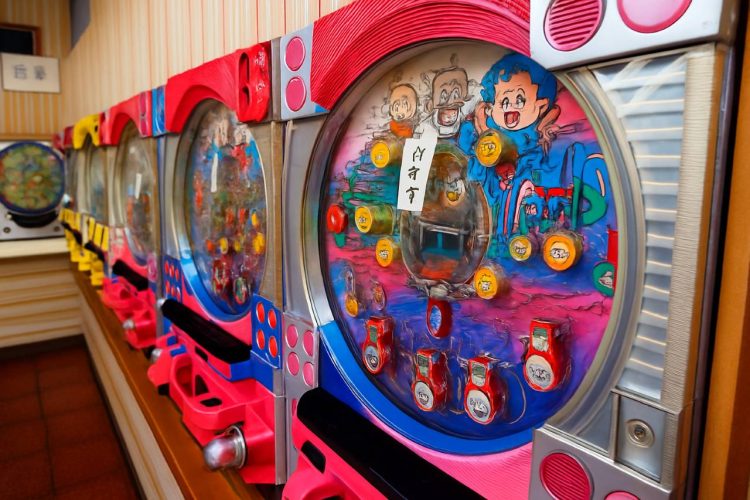Among the many, many cultural entertainment staples of Japan, pachinko has long stood as one of the most robust and incredibly popular. Right now, however, financial reports spell a downturn for the many pachinko parlours across Japan.
What is Pachinko and How Does it Work?

Pachinko is a popular arcade gambling game in Japan that doesn’t register much of a footprint beyond Far East Asia. It’s a mix between a pinball machine and a slot machine, and there’s a natural tendency to relate it to the Price is Right-formed game of plinko. This more Western game is popular today in the form of a prize-winning mechanism as well as a more pachinko-esque gambling game.
The base plinko game sees chips drop down a peg-filled board to eventually land in a prize slot at the bottom. This core mechanic has since evolved into a series of bingo slots online. In this series, slot mechanics are more heavily infused to create randomised results and improve the potential payouts, but still run features of plinko, as shown in Pine of Plinko and Pearl O’ Plinko – Fire & Bones. These aren’t too dissimilar to pachinko.
However, for the most part, pachinko is enjoyed in arcades or parlours rather than online. It’s the bright lights, game chimes, and chance to exchange winnings for real prizes at the end of a session that has long made pachinko a staple part of entertainment across Japan. In pachinko, players shoot the metal balls up the vertical machine to then see them tumble down pegs, obstacles, and pits to decide wins.
Declines in the Pachinko Industry

Pachinko started to get international mainstream attention in the 2010s for making more money than Las Vegas. Indeed, it was only in 2018 that pachinko games across Japan collected $200 billion in bets every year, which amounts to 30 times the gambling revenue of Las Vegas each year. This figure was also more than the entire GDP of New Zealand at the time of the report.
The turn of the decade, however, hit pachinko hard, and its recovery has been far more lacklustre than most would have expected. Now, pachinko remains a huge part of the entertainment industry in Japan. In 2022, pachinko revenue alone amounted to around one quarter of the country’s total leisure industry spending. Still, this is quite the decline, and just from 2023 to 2024, over nine per cent of pachinko parlours closed – leaving over 7,600.
Gaming Goliath Sega Sammy Holdings saw its 2024/25 report take an 8.5 per cent sales hit due to pachinko’s decline. This was despite the rest of the report being very positive. The 27 per cent year-on-year decline of pachinko and its aligned games led to that 8.5 per cent overall drop. Some of this was blamed on the post-2020 decline in pachinko interest, while another portion of the blame was laid on Sega delaying key releases.
Even with these declines, overall, pachinko still makes up a huge slice of the Japanese entertainment industry. However, the developers of these novel games may need to start exploring other markets around the world to build back up to the headline-making figures of the 2010s.
